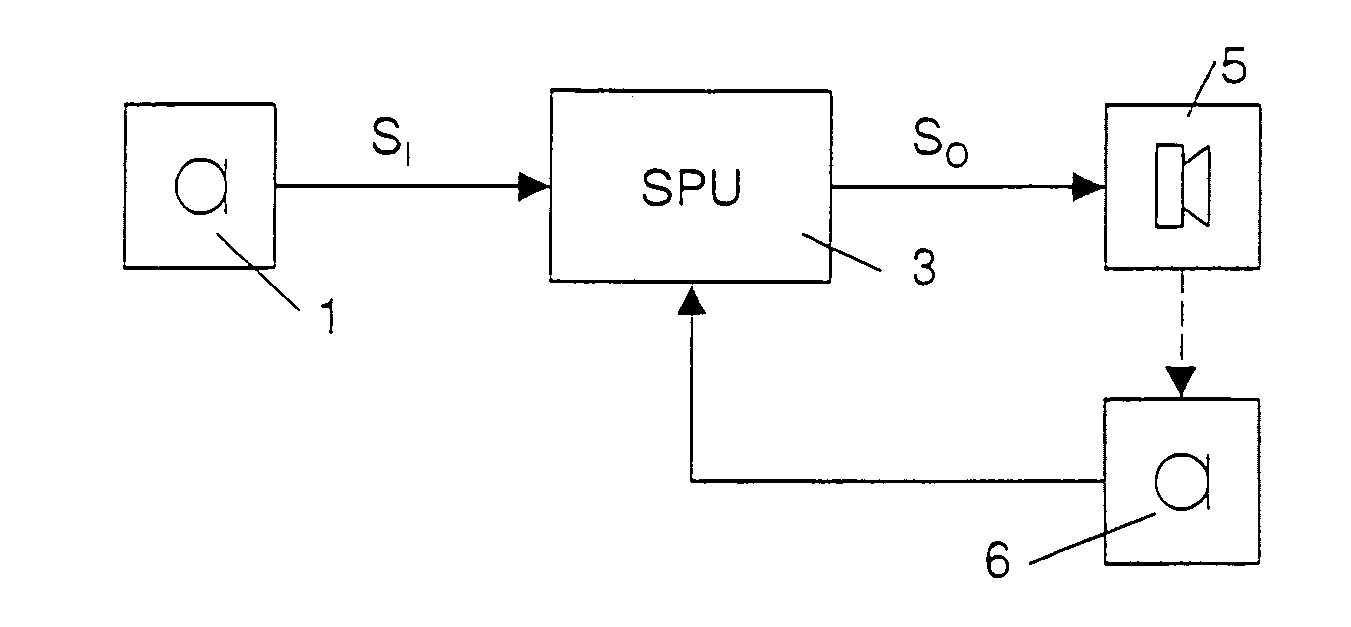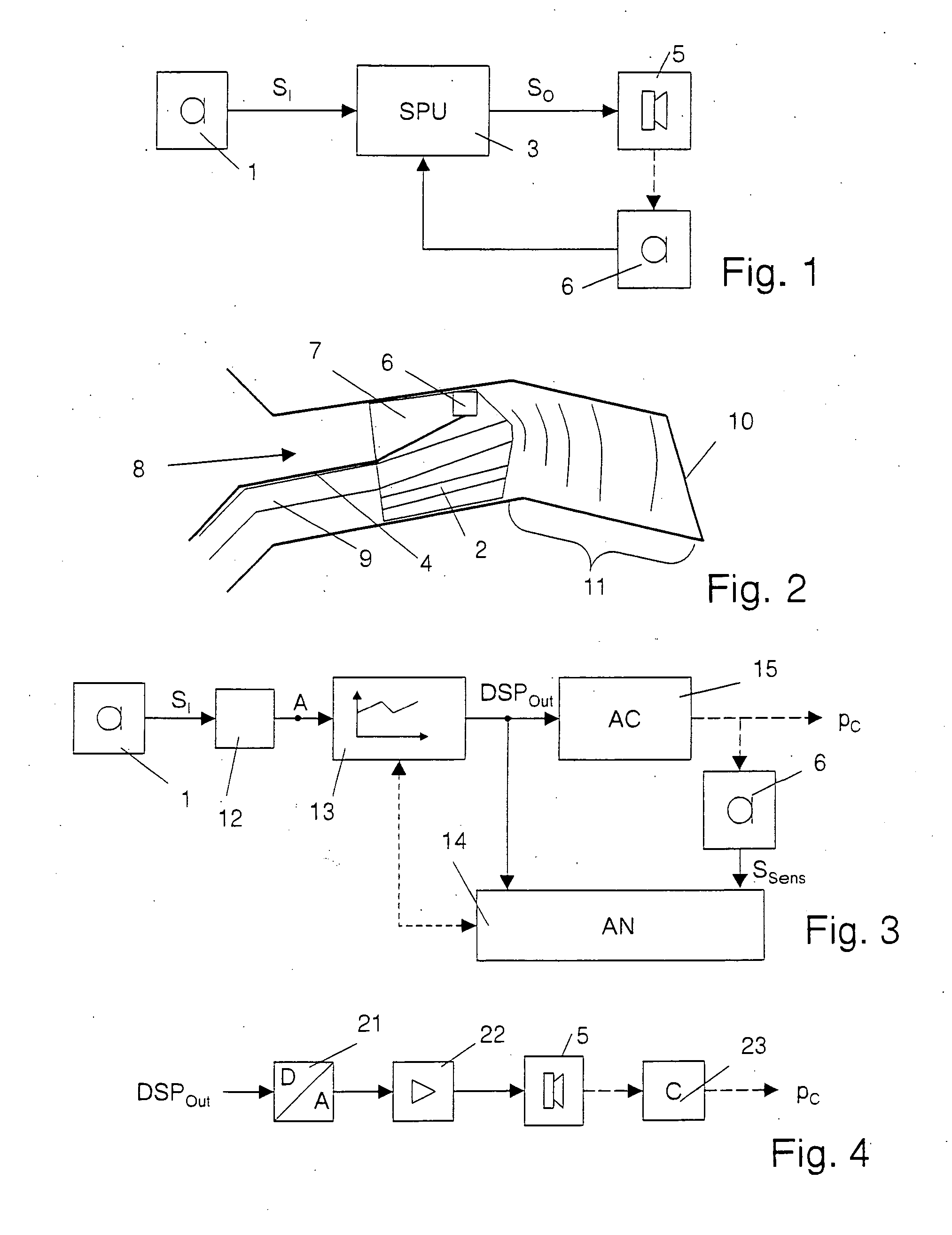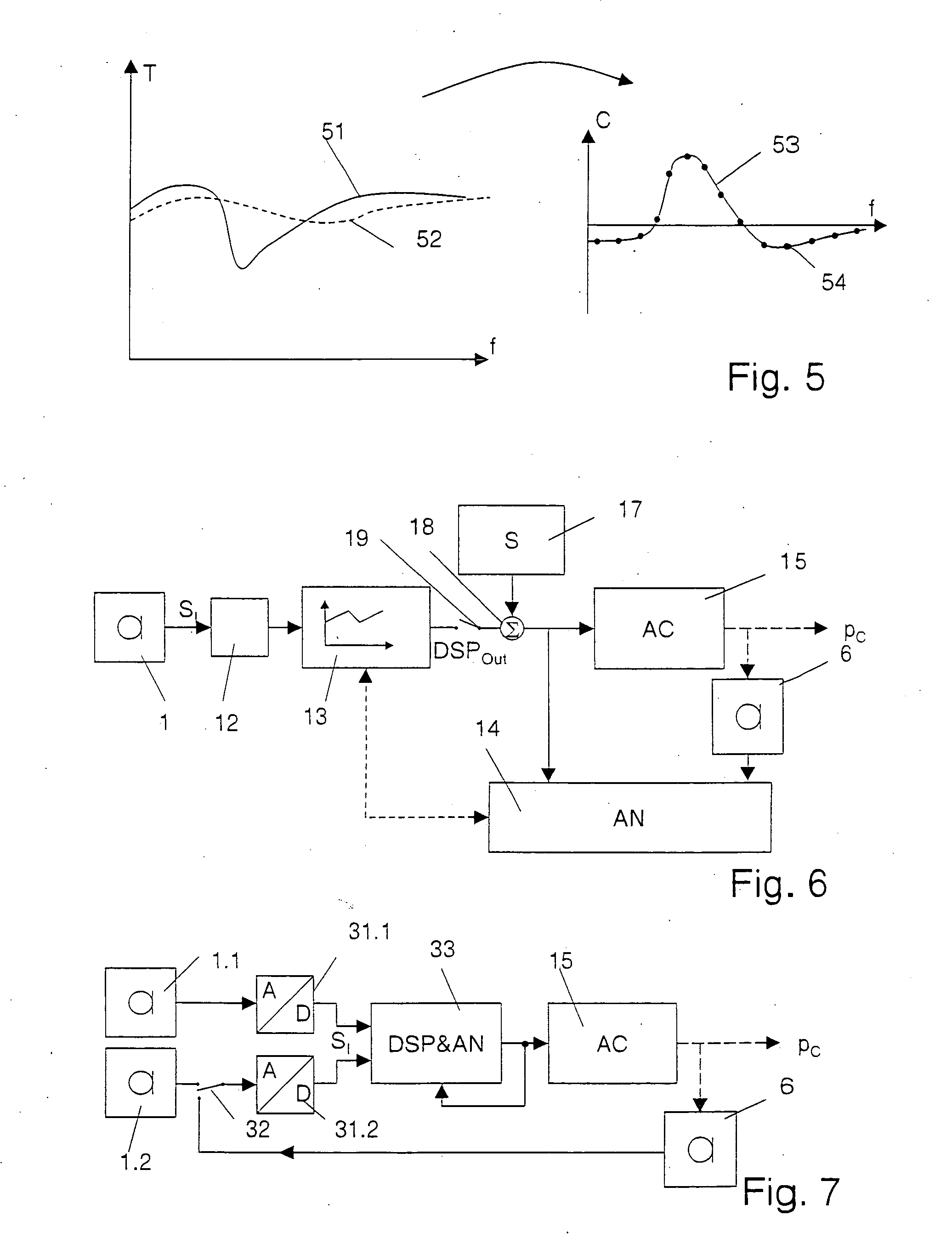Method of obtaining a characteristic, and hearing instrument
a characteristic and hearing technology, applied in the field of hearing instruments, can solve the problems of large calculation power consumption, large occlusion of feedback control, and limited accuracy of such a model system
- Summary
- Abstract
- Description
- Claims
- Application Information
AI Technical Summary
Benefits of technology
Problems solved by technology
Method used
Image
Examples
Embodiment Construction
[0068] The hearing instrument of FIG. 1 comprises at least one outer acoustic-to-electric converter (microphone) 1 (often, two or even three acoustic-to-electric converters are available in each hearing instrument), a signal processing unit (SPU) 3 operable to apply a time- and / or frequency-dependent gain to the input signal or input signals S1 resulting in an output signal SO and at least one electric-to-acoustic converter (receiver) 5. The hearing instrument further comprises an inner acoustic-to-electric converter 6.
[0069] In FIG. 2, very schematically an ear canal 8 with an inserted in-the-ear-canal component, namely an otoplastic 7, of a behind-the-ear hearing instrument is illustrated. In general, an in-the-ear-canal component or an in-the-ear component of a hearing instrument in the context of this application is also called earpiece. The sound output signal is guided from the receiver to an interior of the ear canal 8 by means of a sound conducting tube 9 held by the otopla...
PUM
 Login to View More
Login to View More Abstract
Description
Claims
Application Information
 Login to View More
Login to View More - R&D
- Intellectual Property
- Life Sciences
- Materials
- Tech Scout
- Unparalleled Data Quality
- Higher Quality Content
- 60% Fewer Hallucinations
Browse by: Latest US Patents, China's latest patents, Technical Efficacy Thesaurus, Application Domain, Technology Topic, Popular Technical Reports.
© 2025 PatSnap. All rights reserved.Legal|Privacy policy|Modern Slavery Act Transparency Statement|Sitemap|About US| Contact US: help@patsnap.com



